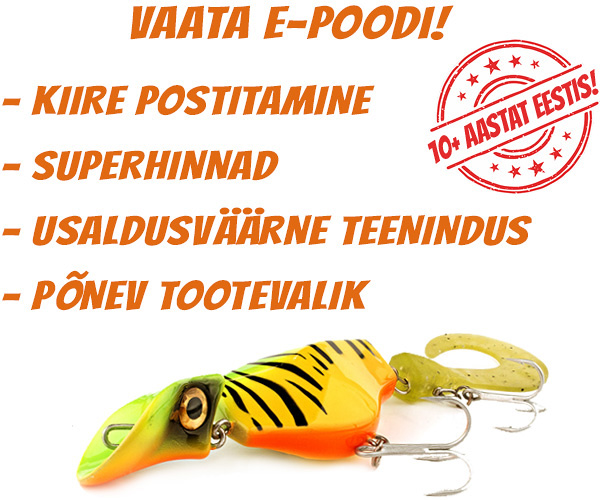Jõeka teemas on üks link (
midcurrent.com/science/fish-eyesight-does-color-matter/
) ja seal on kirjas järgmine:
"Fluorescent Colors Increase Visibility
Many fish, however, can see colors that we do not, including ultraviolet.
Fluorescent colors, especially chartreuse, are very popular with saltwater fly fishermen. I almost always start fishing with a chartreuse Half & Half, even if it’s just to see if there are any fish in the area. Under the right conditions, fluorescent colors, which are not naturally found in nature, can be very visible under water and seen for considerable distances. A fluorescent color is one that will be bright when exposed to light having a shorter wavelength. For example, fluorescent yellow appears as bright yellow when exposed to ultra-violet, blue, or green light. Alternatively, fluorescent yellow does not appear yellow when struck by red light that has a longer wavelength. Because of this unique characteristic of fluorescent colors, they do not have as dramatic a change of color when they are fished deeper.
The fluorescence of fluorescent colors is mainly due to ultraviolet (UV) light, a color that is invisible to us. Humans cannot see UV light, but we can see how it brings out the fluorescence in certain colors. Ultraviolet light is especially dominant on cloudy or gray days, and when UV light hits something having fluorescent material, its color becomes especially visible and vibrant. On bright sunlit days, the fluorescent effect is considerably less, and of course if there is no light, there will be no fluorescence.
Research shows that fluorescent colors are visible and distinct for longer distances than regular colors, and that a fly with fluorescent materials often attracts fish. To be more precise, a fluorescent color having a slightly longer wavelength than the color of the water has better long-distance visibility. For example, in greenish waters, the brightest colors would be fluorescent green or chartreuse. As good as fluorescent colors may be, they will usually not work if the fish are actively feeding on a specific bait, since it is highly improbable that the fluorescent color will resemble any color in that bait.
As you can see, light and color can get pretty complicated. But let’s not forget what we are trying to do: have our flies imitate pieces of fish food. Fish are not very clever, and they attack prey — or flies — as an instinctive behavior motivated (or so we think) by one or more stimuli. These stimuli include movement, shape, sound, contrast, smell, color, presentation, and certainly other things unknown to us. Successful flies should probably include some of these stimuli, and then we need to consider other variables such as the time of day, the tide, and the presence of other fish or fishermen. This is a complicated venture, of which color can sometimes be an important aspect, but only if the fish can see the color."


